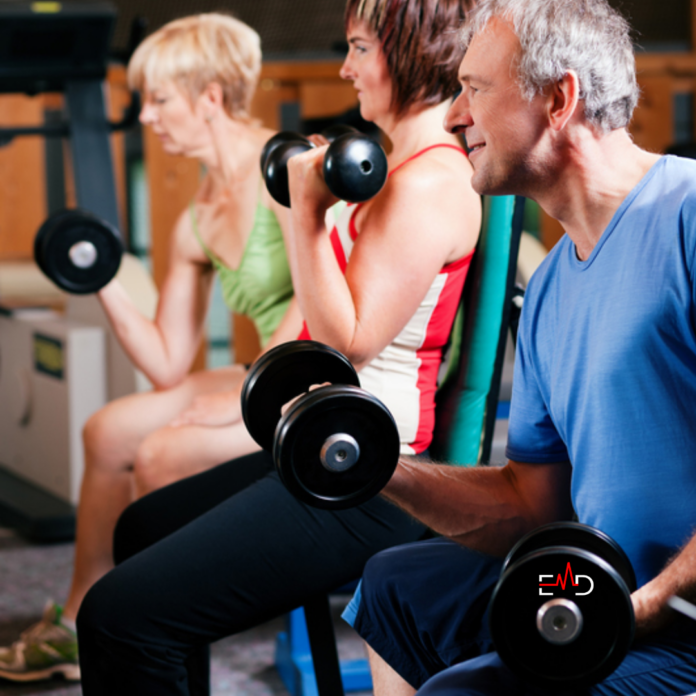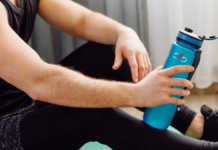Table of Contents
Exercise Daily – As we age, staying physically active becomes more critical. One of the most effective ways for seniors to maintain their health and independence is through strength training. In this article, we’ll explore the world of strength training for seniors, uncovering the numerous benefits it offers.
Why Strength Training Matters for Seniors
Strength training isn’t just for bodybuilders or athletes. It’s an essential component of healthy aging. As we get older, our muscles tend to weaken, and our bones become more fragile. Strength training helps combat these age-related changes, allowing seniors to lead more active and fulfilling lives.
The Benefits of Strength Training
Strength training offers many benefits for individuals of all ages, including seniors. Let’s delve into these advantages in detail:
1. Increased Muscle Mass and Strength
- Strength training stimulates muscle growth and enhances overall muscle strength. This is especially important for seniors as it helps combat age-related muscle loss or sarcopenia.
2. Improved Bone Density
- Strength training stresses bones, which prompts the body to increase bone density. This is crucial for seniors as it can reduce the risk of osteoporosis and fractures.
3. Enhanced Metabolism
- Building muscle through strength training boosts your resting metabolic rate. This means you’ll burn more calories even when at rest, making it easier to maintain a healthy weight.
4. Better Balance and Stability
- Strengthening the muscles that support your body can significantly improve balance and stability, reducing the risk of falls and injuries in seniors.
5. Joint Health
- Strength training can alleviate joint pain and stiffness by improving the integrity of the muscles and ligaments around the joints.
6. Enhanced Cognitive Function
- Regular strength training has been linked to improved cognitive function and reduced risk of cognitive decline in older adults.
7. Increased Energy Levels
- Strength training can boost energy levels, making everyday activities more manageable and enjoyable.
8. Mood Enhancement
- Exercise, including strength training, triggers the release of endorphins, which can improve mood and reduce symptoms of depression and anxiety.
9. Better Insulin Sensitivity
- Strength training can improve the body’s response to insulin, helping to manage blood sugar levels and reduce the risk of type 2 diabetes.
- Enhanced Quality of Life – The combined benefits of strength training, including improved physical health, mental well-being, and increased independence, contribute to a better quality of life for seniors.
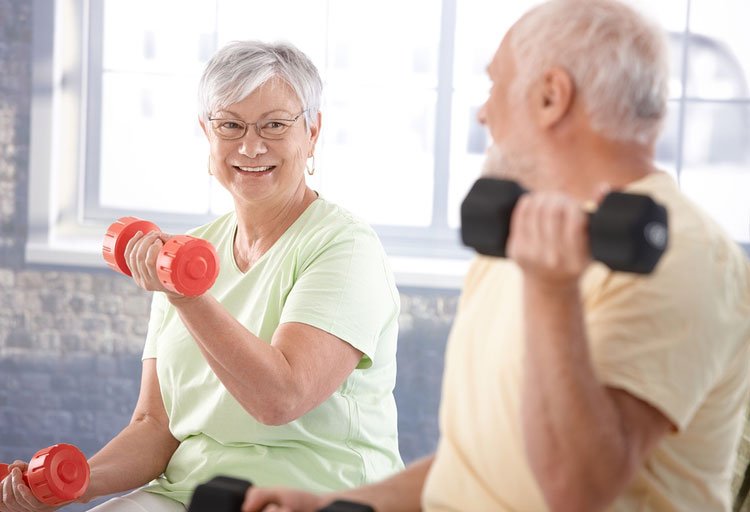
Getting Started
Getting started with strength training, especially for seniors, involves several important steps.
1. Consultation with a Healthcare Professional
Before you embark on any new exercise program, it’s crucial to consult with your healthcare provider, especially if you have underlying medical conditions. Your doctor can provide valuable guidance based on your individual health needs. They can help you identify potential risks or limitations and give you the green light to begin strength training.
2. Choosing the Right Strength Training Program
Selecting a suitable strength training program is the next important step. Consider the following options:
- Local Classes: Many community centers and gyms offer strength training classes specifically designed for seniors. These classes are often led by experienced instructors who can provide proper guidance and supervision.
- Personal Trainer: Hiring a certified personal trainer specializing in senior fitness can be an excellent investment. They can tailor a program to your needs and ensure you use the correct techniques.
- Online Resources: If you prefer the convenience of home workouts, there are numerous online resources, including videos and written guides, that cater to seniors. Look for programs that are created or endorsed by fitness professionals.
3. Essential Equipment
You don’t need a fully equipped gym to start strength training. Some basic equipment can be useful:
- Dumbbells: These come in various weights and are versatile for various exercises.
- Resistance Bands: These bands provide resistance and are gentle on the joints, making them an excellent choice for seniors.
- Stability Balls: These can help balance and core strength and are especially useful for seated exercises.
- Exercise Mat: A comfortable mat is essential for floor exercises.
4. Proper Techniques
To ensure a safe and effective workout, pay attention to proper techniques:
- Warm-Up and Cool-Down: Always start with a gentle warm-up to prepare your muscles and end with a cool-down to help with recovery.
- Correct Posture and Form: Maintaining the right posture and form is crucial to prevent injuries. Follow the instructions provided in your chosen program or by your trainer.
5. Beginner’s Guide
For seniors new to strength training, here’s a simplified beginner’s guide:
Simple Strength Exercises for Seniors: Begin with basic exercises that target major muscle groups. These may include seated leg lifts, wall push-ups, and chair squats.
How Many Repetitions and Sets?: Start with a manageable number of repetitions (e.g., 8-12) and sets (e.g., 2-3) for each exercise. Gradually increase these as you become more comfortable and stronger.
Essential Equipment
When it comes to strength training, especially for seniors, having the right equipment can make a significant difference in the effectiveness and safety of your workouts.
1. Dumbbells and Resistance Bands
Dumbbells: Dumbbells are versatile and come in various weights, making them ideal for a wide range of strength exercises. They can be used to work on both upper and lower body muscles. For seniors, starting with light to moderate weights is advisable to prevent overexertion.
Resistance Bands: Resistance bands are excellent for seniors because they provide resistance without needing heavy weights. They are gentle on the joints and can be used for various exercises to target different muscle groups. They come in varying resistance levels, allowing you to progress as your strength improves.

2. Stability Balls and Exercise Mats
Stability Balls: Stability balls, also known as Swiss or exercise balls, improve balance and core strength. Seniors can use them for seated exercises, stability exercises, and even as a substitute for a weight bench for some exercises.
Exercise Mats: A comfortable exercise mat provides a cushioned surface for floor exercises. Seniors must have a soft, non-slip surface to perform exercises comfortably and safely.
3. Chair or Bench
A sturdy chair or bench can be used for seated exercises, step-ups, and modified push-ups. It provides stability and support, making exercises more accessible for seniors with limited mobility or balance issues.
4. Hand Grips and Ankle Weights
Hand Grips: Hand grips are small devices designed to strengthen the muscles in your hands and forearms. They are useful for seniors who want to improve grip strength and agility.
Ankle Weights: Ankle weights can add resistance to lower body exercises, such as leg lifts and kicks. They help target leg muscles effectively and can be adjusted to different resistance levels.
5. Timer or Stopwatch
A timer or stopwatch can help you track your workout times and rest intervals between sets. It ensures that you’re following your workout plan and helps with consistency.
6. Water Bottle
Staying hydrated is essential during any exercise routine. Having a water bottle nearby ensures that you can replenish fluids as needed.
Proper Techniques
Proper techniques are paramount in strength training, especially for seniors, as they ensure safety and maximize the effectiveness of your workouts.
1. Warm-Up and Cool-Down:
- Warm-Up: Always start your strength training session with a gentle warm-up. This can include light aerobic exercises like walking or stationary cycling for 5-10 minutes. The goal is to increase blood flow to your muscles and prepare them for more intense activity.
- Cool-Down: At the end of your workout, take a few minutes to cool down. Perform light stretches for the major muscle groups you worked on during your session. This helps prevent muscle soreness and promotes flexibility.
2. Correct Posture and Form:
- Body Alignment: Maintain proper body alignment throughout each exercise. This means keeping your head, shoulders, and hips neutral. Avoid leaning too far forward or backward, which can strain your back.
- Core Engagement: Engage your core muscles to stabilize your spine. This helps protect your lower back and provides a solid base for your movements.
- Proper Breathing: Breathe steadily and avoid holding your breath. Exhale during the effort phase (when you lift or push) and inhale during the relaxation phase. Proper breathing helps maintain blood pressure and oxygen supply to muscles.
3. Start with Light Weights:
- For seniors, it’s advisable to begin with light weights or resistance bands. Gradually increase the weight or resistance as you become more comfortable with the exercises and your strength improves. This approach prevents overexertion and reduces the risk of injury.
4. Controlled Movements:
- Perform exercises in a slow and controlled manner. Avoid rapid, jerky movements that can strain muscles or joints. Focus on the quality of each repetition rather than the quantity.
5. Range of Motion:
- Use the full range of motion for each exercise. This means moving your joints through their complete range of movement. For example, in a bicep curl, lower the weight until your arm is fully extended, then lift it until your forearm is close to your upper arm.
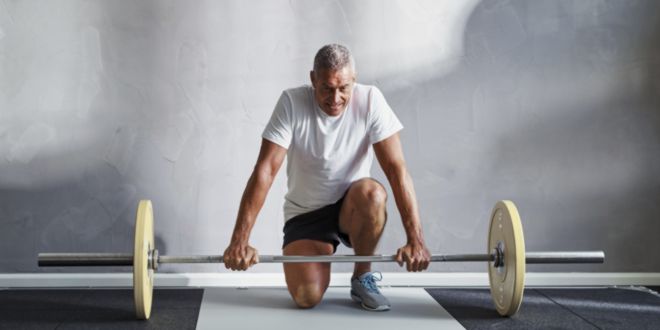
Beginner’s Guide
Starting a strength training program as a beginner, especially as a senior, is a commendable step toward improving your health and fitness.
1. Consult Your Healthcare Provider:
Before you begin any new exercise program, it’s essential to consult with your healthcare provider, especially if you have underlying medical conditions. Your doctor can provide guidance tailored to your specific health needs and ensure that strength training is safe.
2. Set Clear Goals:
Determine what you want to achieve with your strength training. Whether improving muscle tone, increasing bone density, enhancing balance, or managing weight, having clear goals will help you stay motivated.
3. Choose the Right Program:
Select a strength training program that suits your needs and preferences. Consider these options:
- Local Classes: Find strength training classes for seniors at local community centers or gyms. These classes often have experienced instructors who can provide guidance.
- Personal Trainer: If you prefer personalized guidance, consider hiring a certified personal trainer specializing in senior fitness. They can create a customized program tailored to your abilities and goals.
- Online Resources: There are numerous online resources, including videos and written guides, that cater to seniors. Ensure that the program you choose is reputable and suitable for beginners.
4. Start with Body Weight Exercises:
Begin with bodyweight exercises to build strength and proper form. These exercises include squats, wall push-ups, seated leg lifts, and seated marches. Body weight exercises are an excellent way to develop basic strength and prepare your body for more advanced exercises.
5. Focus on Proper Form:
Emphasize proper form and technique over heavy weights. Pay attention to your posture, engage your core muscles, and use controlled movements. Proper form reduces the risk of injury and ensures you target the intended muscles.
Progressive Overload
Progressive overload is a fundamental principle in strength training, and it’s essential to understand, especially for seniors looking to build muscle and bone density. This principle involves gradually increasing the demands placed on your muscles to stimulate growth and strength gains over time. Here’s how to apply progressive overload effectively:
1. Gradually Increase Intensity:
- To build strength and muscle, you need to challenge your muscles progressively. Start with a weight or resistance level that feels moderately challenging but manageable for your current fitness level. As you become comfortable with a particular weight, gradually increase it to keep your workouts challenging.
2. Adjust Repetitions and Sets:
- As you progress, you can also increase the repetitions (reps) and sets you perform for each exercise. For example, if you started with two sets of 10 reps, you could progress to 3 sets of 12 reps as your strength improves.
3. Modify Rest Periods:
- Decreasing the rest periods between sets can make your workouts more demanding. Shortening rest intervals forces your muscles to work harder and adapt to the increased stress.
4. Incorporate Different Exercises:
- Introducing new exercises or variations can add variety and increase the challenge. For instance, if you’ve been doing standard squats, you could progress to goblet squats or lunges to target muscles differently.
5. Increase Frequency:
- Gradually increase the number of strength training sessions per week. Starting with 2-3 sessions per week is typical, but as you progress, you might consider adding an extra day or more exercises into your routine.
Strength Training for Specific Health Conditions
Strength training can be adapted to address specific health conditions, making it a valuable tool for seniors looking to manage or improve their health.
1. Osteoporosis and Bone Health:
- The Challenge: Osteoporosis is characterized by reduced bone density and increased risk of fractures, common among seniors.
- Strength Training Solution: Strength training can help increase bone density and improve bone health. Weight-bearing exercises such as squats, lunges, and leg presses are particularly effective in stimulating bone growth. It’s essential to work with a fitness professional who can tailor exercises to your specific needs and ensure safety.
2. Arthritis and Joint Pain:
- The Challenge: Arthritis often leads to joint pain and stiffness, making exercise difficult.
- Strength Training Solution: Low-impact strength training can help alleviate joint pain by strengthening the muscles around the affected joints, providing better support. Resistance bands and gentle exercises like seated leg lifts and wall push-ups can be effective. Start with light resistance and progress gradually.
3. Diabetes:
- The Challenge: Diabetes, especially type 2, is closely linked to obesity and insulin resistance.
- Strength Training Solution: Strength training enhances insulin sensitivity, helping the body use insulin more effectively to regulate blood sugar levels. This can assist in managing and preventing type 2 diabetes. A combination of strength exercises and aerobic activities can be beneficial.
4. Heart Disease:
- The Challenge: Heart disease is a leading cause of death among seniors.
- Strength Training Solution: Strength training can improve cardiovascular health by lowering blood pressure, reducing LDL (bad) cholesterol, and increasing HDL (good) cholesterol. A well-rounded exercise program, including strength and cardiovascular exercises, can promote heart health.
5. Chronic Pain Conditions:
- The Challenge: Chronic pain conditions, such as fibromyalgia, can limit physical activity.
- Strength Training Solution: Strength training can be modified to accommodate individuals with chronic pain. Gentle, low-impact exercises and resistance bands can help improve muscle strength and reduce pain over time. Start with minimal resistance and gradually increase it.
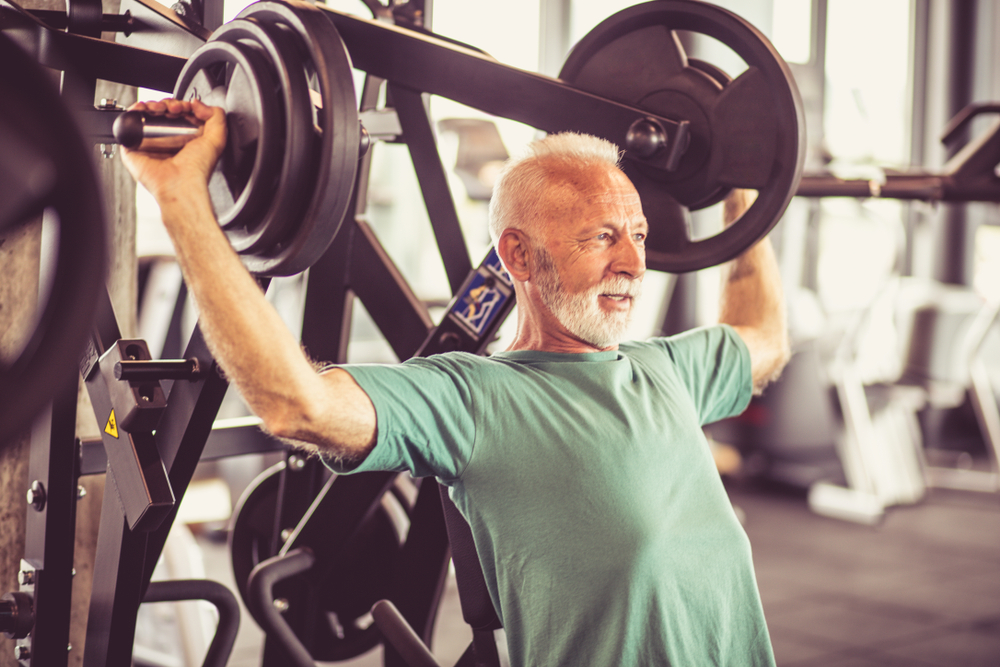
Conclusion
Strength training for seniors is not just about building muscle; it’s about enhancing overall health and quality of life. With the right guidance and a commitment to consistency, seniors can embark on a journey of increased strength, improved bone density, and greater vitality.
FAQs – Strength Training for Seniors: Building Muscle and Bone Density
Q: Can seniors start strength training at any age?
Absolutely! Seniors can start strength training at any age. It’s never too late to begin. Strength training offers numerous benefits, including improved muscle mass, bone density, and overall health, regardless of age.
Q: How many times a week should seniors engage in strength training?
For beginners, 2-3 strength training sessions per week are typically recommended. This allows for adequate recovery between workouts. As you progress, you can consider increasing the frequency or intensity of your sessions.
Q: Are there any age-related limitations to consider when starting strength training?
While seniors can certainly engage in strength training, it’s important to consider individual limitations and adapt exercises accordingly. Some seniors may have mobility issues or chronic health conditions that require modifications. Consult with a healthcare provider or fitness professional for personalized guidance.
Q: Is it advisable for seniors with chronic health conditions to train in strength?
Strength training can benefit seniors with chronic health conditions. Still, it should be done under the guidance of a healthcare provider or a fitness professional who can tailor the program to accommodate specific needs and ensure safety.
Q: What are some simple exercises seniors can do at home?
Seniors can do various simple exercises at home, such as seated leg lifts, wall push-ups, chair squats, and resistance band exercises. These exercises target major muscle groups and can be adapted to individual fitness levels and limitations.


